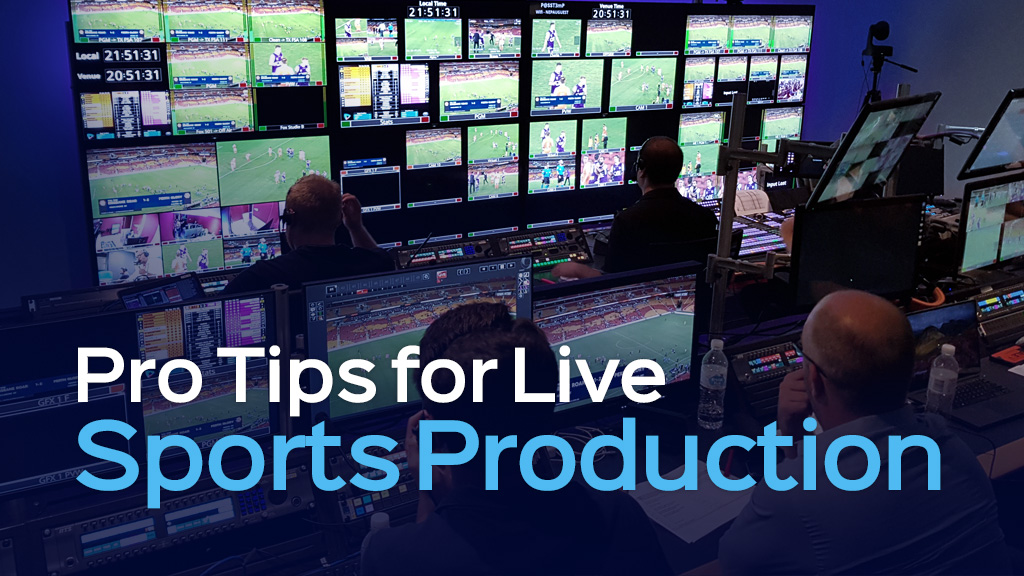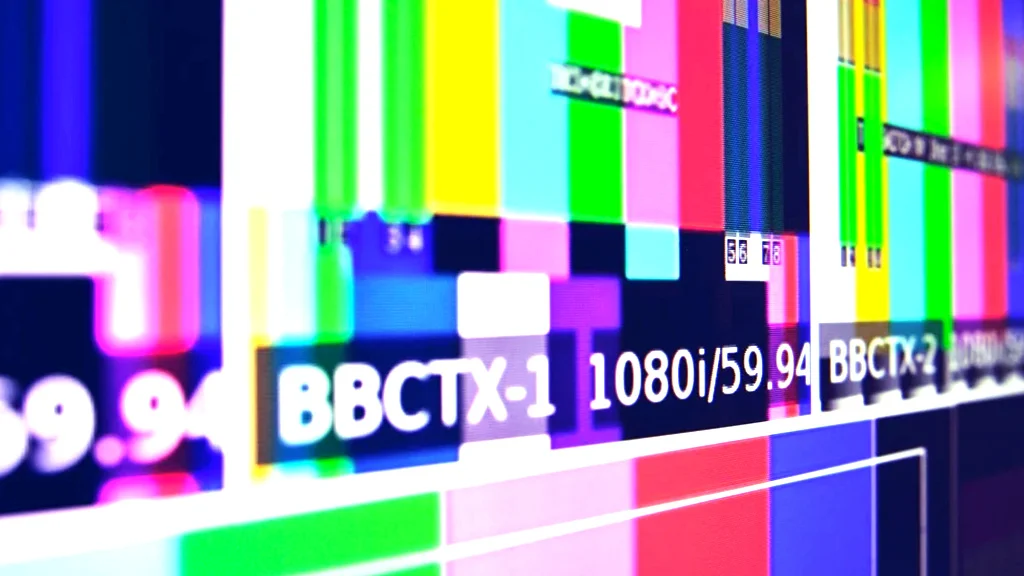
- Academy
Media Broadcasting, Advantages and challenges
Broadcasting of media and information has long been a cornerstone of mass communication, connecting people across vast distances through radio, television, and now digital platforms. Its ability to share information quickly and effectively makes it an irreplaceable tool in the modern world. In this article, we’ll explore the advantages of broadcast media, tracing its evolution, benefits, and standards.
Historical Background of Media Broadcast
Evolution of Radio Broadcasting
Radio broadcasting, the first form of media broadcast, revolutionized communication in the early 20th century. It allowed for real-time news dissemination and entertainment, reaching audiences that print media could never touch in an easier and faster approach. The advent of radio brought about a new era where information was accessible to the masses, paving the way for future advancements in broadcasting.
Growth of Television Broadcasting
Television took broadcasting to new heights with its audio-visual capabilities. It became a dominant force in media by the mid-20th century, offering a dynamic platform for news, entertainment, and educational content. The influence of television grew rapidly, becoming a household staple worldwide.
Emergence of Digital Broadcasting
The digital age ushered in a new wave of broadcasting. With the rise of the internet, digital broadcasting has made content more accessible and interactive. Platforms like streaming services and podcasts have expanded the reach and versatility of broadcast media, ensuring its relevance in the 21st century.

Advantages of Media Broadcasting
Wide Reach
One of the most significant advantages of broadcast media is its extensive reach. Radio and television can penetrate remote areas, bringing information and entertainment to people regardless of geographic limitations. This broad accessibility, facilitated by advanced broadcast tools, is unmatched by other media forms.
Real-time Information
Broadcast media excels in delivering real-time information. News bulletins, live reports, and emergency broadcasts ensure that audiences receive up-to-date information as events unfold. This immediacy is crucial for public awareness and safety.
Accessibility
Radio and television are accessible to a wide audience, including those who may not have access to the internet or print media. This inclusivity makes broadcast media a vital tool for disseminating information to all societal segments.
Cost-Effectiveness
For consumers, access to broadcast media is often free or low-cost. Public radio and television services provide essential information and entertainment without the need for expensive subscriptions, making them accessible to people in various economic situations.
Credibility and Trust
Established broadcast media outlets have built a reputation for credibility and trust over the years. Audiences often rely on these sources for accurate and reliable information, which is crucial in an era of rampant misinformation.
Benefits of Radio Broadcasting
Portability
Radio is highly portable, allowing listeners to tune in from virtually anywhere – at home, in the car, or on the go. This flexibility ensures that radio remains a relevant medium in today’s fast-paced world.
Targeted Audience
Radio stations often cater to specific demographics, making it easier for advertisers to reach their target audience. This targeted approach increases the effectiveness of advertising campaigns.
Community Engagement
Local radio stations play a vital role in community engagement, providing a platform for local news, events, and discussions. This connection fosters a sense of community and belonging among listeners.

Read also :
Outside Broadcasting , What’s Inside?
Benefits of Television Broadcasting
Visual and Auditory Appeal
Television combines audio and visual elements, creating a powerful medium that can capture and retain viewers’ attention. This dual-sensory engagement ,enhanced by advanced broadcast tools, makes TV an effective platform for storytelling and advertising.
High Engagement
Television shows, news broadcasts, and commercials often achieve high levels of viewer engagement. The immersive experience of watching TV can evoke strong emotional responses, making messages more impactful.
Educational Content
Television has a long history of providing educational content, from children’s programming to documentaries. This educational value extends the benefits of television beyond entertainment.
Benefits of Digital Broadcasting
Interactivity
Digital broadcasting offers interactive features that traditional media cannot match. Viewers can engage with content through social media, participate in live polls, and access additional information with a click.
On-Demand Access
Streaming services provide on-demand access to a vast array of content. This convenience allows users to watch their favorite shows and movies whenever and wherever they want, enhancing the viewing experience.
Integration with Social Media
Digital broadcasting integrates seamlessly with social media platforms, enabling content to reach a broader audience. This synergy amplifies the impact of broadcast media, making it more relevant in the digital age.
Advantages of Broadcasting Method
Efficiency in Communication
Broadcasting is an efficient way to communicate with large audiences. It allows for the simultaneous transmission of information to hundreds of millions of people, ensuring that messages reach a wide audience quickly.
Scalability
Media broadcast infrastructures can scale operations to meet the demands of varying audience sizes. From local broadcasts to global coverage, broadcasting adapts to different scales effectively.
Consistency in Messaging
Media and information broadcast methods ensure consistency in messaging, which is crucial for public announcements and marketing campaigns. This uniformity helps maintain the integrity and clarity of the information being disseminated.

Standards in Broadcasting
Regulatory Bodies
Broadcasting standards are defined, administered and maintained by special regulatory bodies and boards in each country or region. These organizations ensure that broadcasters adhere to ethical and legal guidelines, protecting public interests.
Quality Control
Quality control measures in broadcasting ensure that content meets certain standards before it reaches the audience. This process involves rigorous checks for accuracy, clarity, and appropriateness.
Ethical Standards
Broadcasters are held to high ethical standards, which include fairness, impartiality, and respect for privacy. These principles uphold the credibility and trustworthiness of broadcast media.
Technological Advances in Broadcast Media
High Definition (HD) Broadcasting
HD broadcasting has significantly enhanced the viewing experience by providing higher resolution images and superior sound quality. This technology has become standard in modern television.
Production Control Rooms
Modern production control room is the backbone of live and recorded broadcasting. These rooms ensure seamless production workflows, high-quality output, and compliance with broadcasting standards. With advancements in IP broadcasting and automation, they have become more efficient and technologically advanced.
Satellite Broadcasting
Satellite broadcasting expands the reach of television and radio by transmitting signals to remote and underserved areas. This technology ensures that even the most isolated regions can access broadcast media. relying heavily on sophisticated broadcast production.
Streaming Services
Streaming services represent the latest evolution in broadcast media, offering a vast library of content accessible on-demand. Services like Netflix, Hulu, and Amazon Prime have revolutionized how audiences consume media.
Effective Campaigns om Media and Information Broadcast
Political Campaigns
Broadcast media has been instrumental in political campaigns, providing candidates with a platform to reach a wide audience. Televised debates, campaign ads, and interviews play a crucial role in shaping public opinion.
Public Health Announcements
During public health crises, broadcast media serves as a vital tool for disseminating information. Campaigns to promote vaccination, hygiene practices, and emergency responses rely heavily on the reach and credibility of broadcast media.
Corporate Advertising
Companies leverage broadcast media to advertise their products and services to a broad audience. Effective ad campaigns on television and radio have the power to boost brand recognition and drive sales.
Challenges of Media Broadcast
High Production Costs
Producing high-quality content for television and radio can be expensive. The costs of equipment, talent, and production can be prohibitive for smaller entities.
Limited Feedback Mechanism
Unlike digital media, traditional broadcast media offers limited opportunities for audience feedback. This lack of interactivity can make it difficult to gauge audience reactions in real-time.
Competition from New Media
Broadcast media faces stiff competition from digital and social media platforms. The rise of streaming services and online content has fragmented audiences, challenging traditional broadcasters to adapt and innovate.
Future of Media Broadcast
Integration with AI
Artificial intelligence is set to revolutionize broadcast media. AI can personalize content, recommend shows, and even create news summaries. AI in broadcast media promises to enhance viewer experience and streamline broadcasting processes.
Personalized Broadcasting
Future broadcasting will likely offer more personalized content. With data analytics, broadcasters can tailor programming to individual preferences, making media consumption more relevant and engaging.
Global Trends
Globalization is influencing broadcast media, with content crossing borders more than ever. International collaborations and the global distribution of content are becoming common, expanding the reach and impact of broadcast media.
Conclusion
Media and information broadcast remains a powerful force in the world of communication, offering unparalleled reach, real-time information, and trusted content. Despite the challenges posed by new media, its ability to adapt and innovate ensures its continued relevance. From the early days of radio to the digital era, broadcast media has proven its enduring value.









